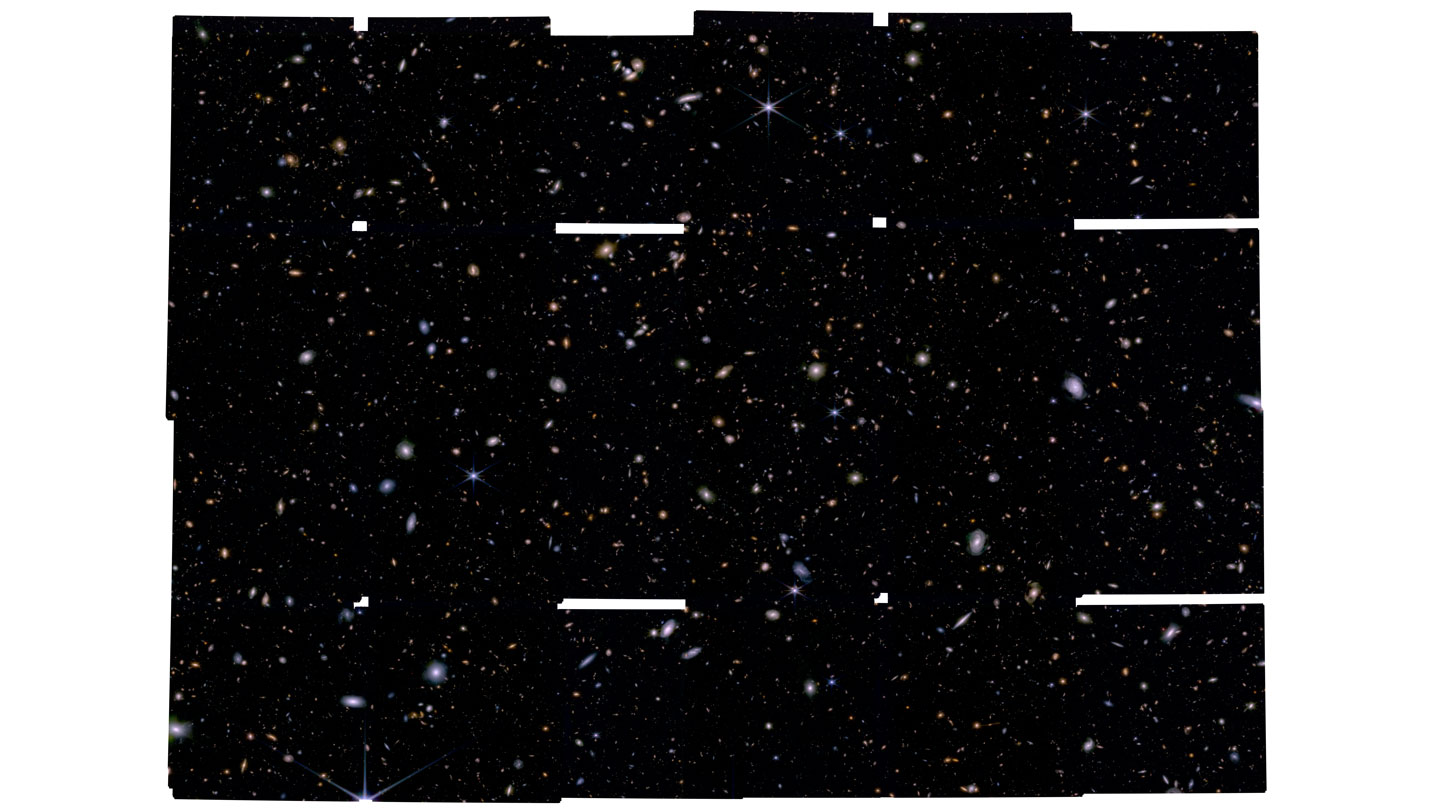The James Webb Space Telescope has discovered potential new stars in the early universe that are believed to be powered by dark matter.
Dark stars were first proposed in 2007 by cosmologist Katherine Freese and her colleagues. These stars are thought to have been among the first to form in the universe and are powered by heat from interactions with dark matter, rather than nuclear fusion reactions like our sun.
According to Freese, dark stars would have a unique appearance. They would have formed from clouds of hydrogen and helium that attracted dark matter as they came together. The true nature of dark matter is still unknown, but it is believed that dark matter particles can interact with each other, producing light and heat when they collide. This heat would prevent the hydrogen and helium cloud from condensing into a dense, hot core like modern stars.
Due to the continuous heat from dark matter annihilations, dark stars could grow to enormous sizes. Theoretically, they could be 10 times wider than the Earth’s orbit around the sun and millions of times more massive than the sun. They would also shine billions of times brighter, potentially making them visible to the James Webb Space Telescope.
2023-07-24 08:00:00
Article from www.sciencenews.org
